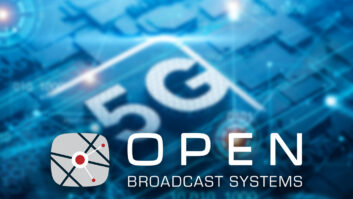Over the last 20 years, I’ve lived through two massive events that have had profound and far-reaching impacts on the broadcast industry.
Firstly, the advent of social media. These now ubiquitous networks gave rise to new ways of sharing and consuming content – outside of the black box in the corner of the living room – and they opened a whole new market for media, formats, talent, production and earning potential.
Hot on the heels of social media, as recently as 2007, a little-known DVD rental service called Netflix launched a streaming platform…and we all know what happened next!
In the last few years, we’ve seen several media companies launch their own direct-to-consumer streaming services in an attempt to emulate Netflix’s success, meaning the battle for audiences’ time and attention is currently fiercer than ever.
In this ever more fragmented media landscape, consumers are being paralysed by choice, so convincing them to choose (or pay for) your content over the millions of other titles in the marketplace lies at the heart of the challenge.
This all leads to why I’m fascinated by non-fungible tokens (NFTs), not only in terms of their creative and technological potential, but especially because they’re offering a newly defined role for the audience.
Video content, on whatever platform or medium you watch it, is still fundamentally a one-directional experience. You are a viewer. Even on social media with the ability to like, comment and interact, you are still a consumer inside its ad-funded framework.
By comparison, in the realm of blockchain-powered content, the audience is promised newfound levels of participation. This is where I believe NFTs can gain their advantage, disrupt the current status quo, and ultimately influence where audiences invest their time, attention and cash.
I have summarised where I believe this nascent technology’s impact will be most felt into the three I’s – Incentivisation, Interactivity and Identity.
Incentivisation
This is arguably the most significant factor.
For the consumer, by buying an NFT you are transitioning from a passive consumer into an active investor in a cultural project. This means you can contribute to and earn from its success, whether by receiving exclusive rewards and royalties from the creator or trading the tokens through a marketplace.
For producers, NFTs present a new path to funding content and building an active, loyal and motivated fanbase in the process. Mila Kunis’ adult animation Stoner Cats has emerged as one of the highest profile case studies to date, raising $8 million of funding inside its first 35 minutes of release.
From a personal perspective, I have often found the experience of pitching formats into broadcasters to be slow, frustrating and creatively stifling. NFTs offer us a way to either circumvent the networks’ gatekeepers altogether, or engage them further down the track from a position of strength once the project has traction, data and funding in place.
Interactivity
Deloitte’s Digital Media Trends 2021 stated that the majority of Gen Z respondents chose gaming, music and social media over TV as their preferred source of entertainment.
Moving forwards, the challenge for TV, no longer the single dominant medium, is how it competes with the immersive, interactive and community-driven qualities of digital entertainment.
In respect of NFTs specifically, creators publish their “utility” plans and project roadmaps, essentially promoting the various ways they intend to involve their community, create exclusive experiences, and collectively grow the project’s value.
Identity
The rapid growth of NFTs has been driven in great part by the engines of social media.
And as the physical and digital worlds blur more than ever, participants’ identities become increasingly intertwined with the NFTs and projects.
NFT holders change their profile photos and handles to the tokens they own, they build and gather in fervent communities on social media (in particular Twitter and Discord), and they create dedicated content, products and events to promote the project and signal their allegiance to it.
All this shared content and activity provides valuable social currency for the participants.
So what does this all mean for TV?
I believe like social media and streaming before it, Web 3.0 and its associated technologies – metaverses, avatars, blockchains, cryptocurrencies, and of course NFTs – are going to have a similarly profound effect on the industry.
Recently I was reminded however that we do still read newspapers and listen to the radio, so it’s unlikely that these new content sources will sweep away all others that came before them. It’s more likely that they’ll integrate into our media landscape and consumption patterns.
The key question is, by how much?
The answer to that ultimately lies in who can best convince audiences where to commit their time and attention.
My belief is that NFTs and their unique set of properties – the ability to offer strong incentives to participants, enable interactive community-led experiences, and propagate powerful cultural identities – are well placed to usher in this new paradigm of content funding, creation and consumption.







